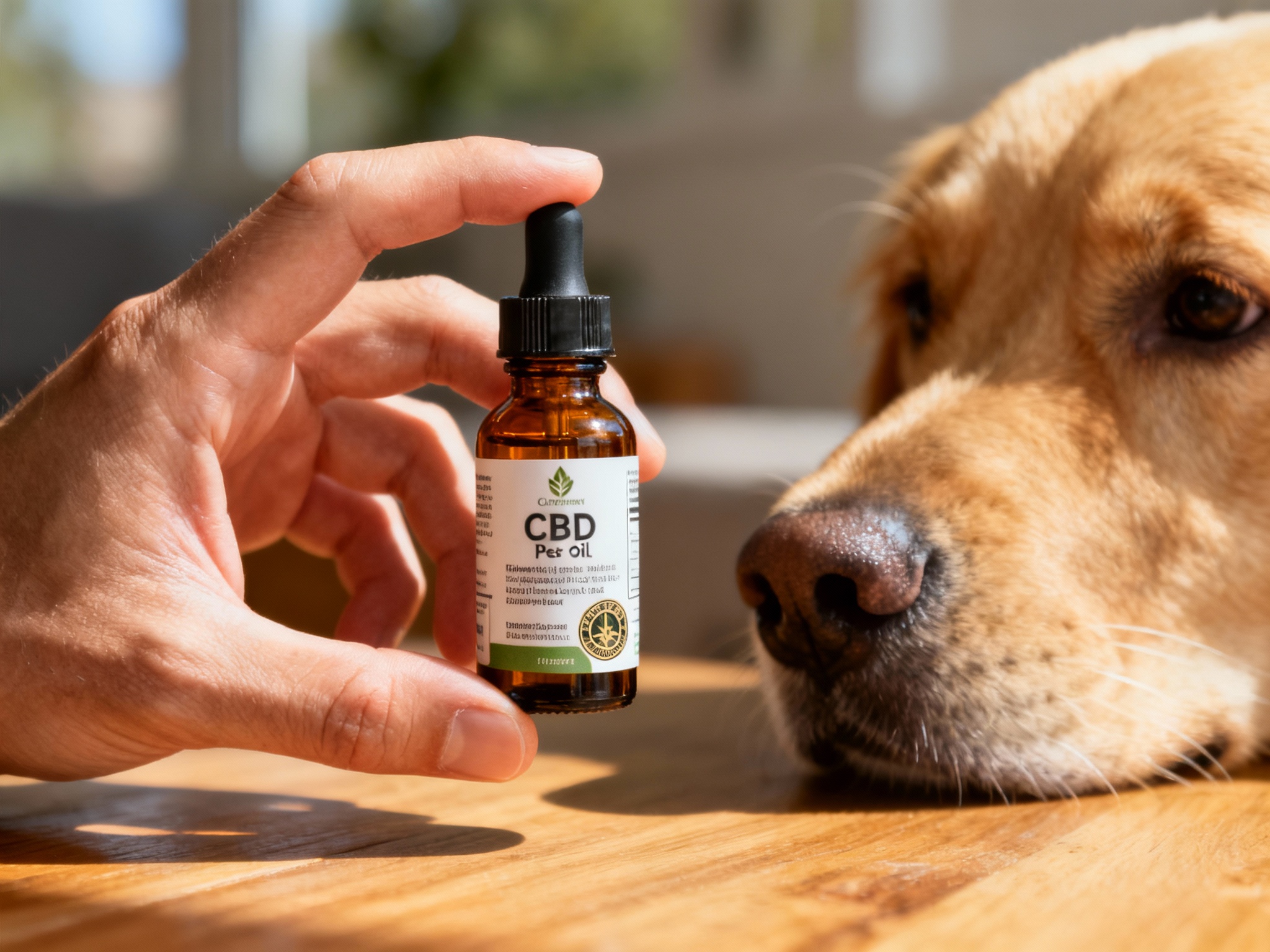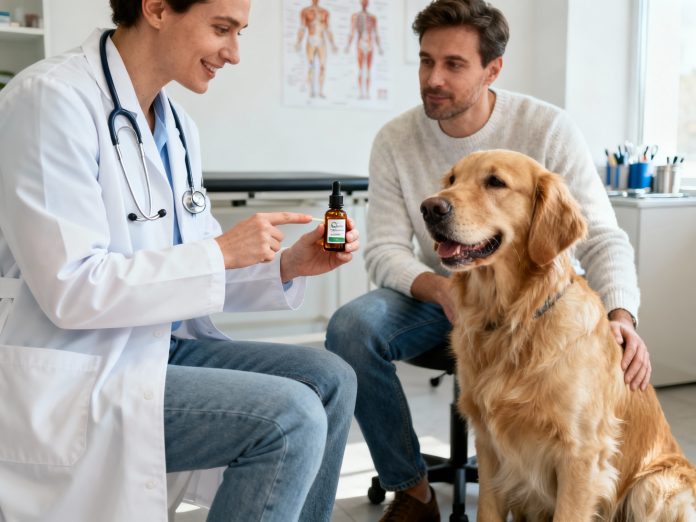Why Authenticity Matters For Pet CBD
Cannabidiol oil for dogs continues to grow in popularity. Often, dog guardians will explore it to assist their dog with a situational anxiety problem, hip, and joint comfort, or general mobility. But not all bottles are created equal. A trustworthy, properly made CBD-hull extract should be traceable, lab-verified, and marked correctly so you know exactly what goes into your dog’s bowl.
Before introducing CBD oil for dog into a dog’s routine, it’s crucial to ensure its authenticity. Is the oil truly free from harmful additives? Is it sourced from high-quality hemp? This guide will assist in checking the authenticity of CBD oil for dogs, and the pet’s safety will not be compromised.
In practical terms, “authentic” means.
In practical terms, “authentic” means:
-
The product contains the CBD milligrams that the label claims.
-
It does not contain poisonous metals, pesticides, or any solvents.
-
It meets a safe THC threshold for pets.
-
The brand provides verifiable documentation, including a Certificate of Analysis (COA) tied to the batch number of your bottle.
These basics keep your dog safer and help you evaluate value for money.
The Gold Standard: Third-Party Lab Testing You Can Actually See
Independent, ISO-accredited labs are the backbone of CBD quality control. A credible product will provide a COA for your exact lot, not a generic PDF.
What to look for on the COA
-
Identity and potency: CBD per mL or per soft chew; look for variance within industry norms
-
Cannabinoid profile: confirm broad-spectrum, full-spectrum, or isolate matches the label
-
THC content: for pets, ensure no more than 0.3 percent THC by dry weight and ideally “ND” (non-detectable) in the finished oil dose
-
Contaminant panels:
-
Heavy metals: lead, arsenic, cadmium, mercury
-
Pesticides: common agricultural residues
-
Residual solvents: if ethanol extraction is used
-
Microbiology: total plate count, yeast and mold, pathogens
-
Trust signals: a scannable QR code on the label linking directly to the lot-specific COA, and testing performed by an ISO/IEC 17025 accredited lab.
Pro tip: If the COA is missing, out of date, or not batch-matched, move on.

Know Your Hemp: Source, Farming Practices, and Extraction
Hemp is a bioaccumulator-it draws up what is in the soil. It is ideal for phytochemicals but not suitable for contaminants.
The effectiveness of CBD oil is often reliant on the type of hemp used to create the product. Because hemp is a bioaccumulator, it can absorb harmful toxins, so where it comes from matters. Make sure that the CBD oil comes from hemp created through organic farming. This will prevent most exposure to pesticides or other toxic chemicals.
Brands that use high-quality hemp will usually mention this in their product description or packaging. Therefore, you must get the hemp’s source and ensure that it grows in clean and sustainable places for the safety of your dog.
Sourcing essentials
-
It is disclosed where the goods originate; sourcing from the USA or the EU is common.
-
Practices must be organically grown, ideally certified.
-
Grown without GMOs, pesticides, and with water use transparency.
Extraction and refinement that protect purity
-
CO₂ extraction is widely favored for preservative-free purity
-
Ethanol extraction can be excellent when followed by validated residual solvent removal.
-
Winterization and filtration reduce waxes and impurities; decarboxylation converts CBDa to active CBD.
Carrier oils matter
-
MCT oil (medium-chain triglycerides) is commonly used for better bioavailability
-
For sensitive dogs, look for allergen disclosures and avoid flavorings that might include xylitol or problematic essential oils.
Full-Spectrum vs Broad-Spectrum vs Isolate: Picking The Right Profile
Each profile has a place in pet care. The key is matching the cannabinoid and terpene profile to your dog’s needs and sensitivities.
Full-Spectrum
Contains CBD plus trace cannabinoids (for example CBG, CBN) and terpenes—aiming for the entourage effect. It may be favored for joint comfort and calm support if your dog tolerates it well.
Broad-Spectrum
Similar to full-spectrum, but THC is removed to non-detectable levels. Many pet parents choose this for anxious dogs or when they want the complexity of hemp minus THC.
Isolate
Pure CBD with no other cannabinoids. Useful for elimination trials or highly sensitive pets, though it lacks the entourage complexity.
Natural-language LS1 terms incorporated above: CBD for dogs, hemp extract, entourage effect, cannabinoids, terpenes, CBG, CBN, bioavailability, MCT oil, CO₂ extraction, residual solvents.
Verify THC Content: Safety First
Dogs are more sensitive to THC than people. While the farm bill threshold is ≤0.3 percent THC, many reputable pet brands design dosing so the THC in a typical serving is non-detectable. Confirm on the COA and the label dosing chart. If in doubt, choose broad-spectrum or isolate.
Red flags
-
No THC line item on the COA
-
Label claims “THC-free,” but the COA shows measurable THC.
-
Vague serving instructions without mg CBD per mL
Labeling That Builds Trust
Excellent packaging reads like a nutrition label, not marketing gloss.
Must-have details
-
CBD mg per mL and total CBD per bottle
-
Dropper markings in mL to make dosing reliable
-
Batch number / LOT that matches the COA
-
Serving guidance by weight with “start low, go slow” language
-
Ingredients panel with carrier oil, flavorings, and allergens
-
Storage and use-by date.
These are less important but still recommended: GMP manufacturing claims, NASC Quality Seal for pet supplements, and the specific details for getting in touch with support.
Read Real-World Feedback (But Weigh It Wisely)
Owner reviews can highlight palatability, digestive tolerance, and consistency across orders. Look for patterns:
-
Reports of steady behavior support in separation anxiety or noise sensitivity
-
Notes about joint comfort in senior dogs and big breeds
-
Honest mentions of side effects like loose stool when dosing is too high
Balance testimonials with the documentation – COA and sourcing still matter most.
Dosing Basics: Start Low, Go Slow, Track Results
While your veterinarian should guide dosing, a practical framework helps ensure the safety of your pet.
H4: A simple approach
-
Introduce gradually: divide the first week into quarter-dose steps
-
Monitor: appetite, stool quality, energy, and target behavior or mobility
-
Tweak weekly, not daily: give the endocannabinoid system time to respond
-
Keep a log: same time of day, same food conditions
LS1 inclusions: dosing chart, start low, go slow, endocannabinoid system, mobility support, anxiety relief.
Ask your vet whether drug-supplement interactions are likely for your dog’s prescriptions (in particular if they are liver metabolism).
Quick Authenticity Checklist For Pet Parents
-
Batch-matched COA with potency, cannabinoid profile, and full contaminant panels
-
Source transparency: region, organic claims, cultivation practices
-
Clear THC line item at or below legal limits and preferably non-detectable per serving
-
Accurate label math: CBD mg per mL aligns with the COA
-
GMP/NASC signals, responsive customer support, and a real return policy
-
Pet-specific formula: no xylitol, tea tree, or problematic essential oils
Red Flags That Tell You To Walk Away
-
“Proprietary hemp blend” with no mg CBD listed
-
No QR code or the code links to a generic brochure instead of your batch COA
-
Outdated lab reports or reports from non-accredited labs
-
Medical claims that sound like cure-alls
-
Price far below market for comparable potency and testing
Frequently Asked Questions
Can I use my own CBD oil for my dog?
Human CBD may contain flavorings or sweeteners unsafe for dogs and may have different THC allowances. Choose a pet-specific product with a pet-safe ingredient list and a batch COA.
Will CBD make my dog sleepy?
Some dogs appear calmer at appropriate doses. Excessive sedation suggests the dose is too high or the product contains THC – check the COA and reduce or switch to broad-spectrum/isolate.
How long until I notice effects?
For situational stress, some pets respond within 1 to 2 hours. For joint comfort, look for changes over 1 to 3 weeks of consistent use.
Is full-spectrum better than isolate?
It depends. Full-spectrum offers the entourage effect; broad-spectrum removes THC; isolate is the simplest profile. Let tolerance, goals, and vet guidance decide.
Can CBD interact with medications?
Yes, a potential does exist, particularly for medications that are metabolised by liver enzymes. Consult your veterinarian before starting.
Putting It All Together: A Safe-Use Roadmap
-
Shortlist brands with transparent sourcing and ISO-17025 lab partners
-
Open the COA from the bottle’s QR code and match the lot number
-
Confirm CBD potency, THC threshold, and clean contaminant panels
-
Choose profile: full-spectrum, broad-spectrum, or isolate based on your dog’s needs
-
Introduce gradually, log outcomes, and review with your veterinarian after 2 to 4 weeks
When you verify the science behind the label, you protect your pet and your wallet and give CBD an honest chance to help.


